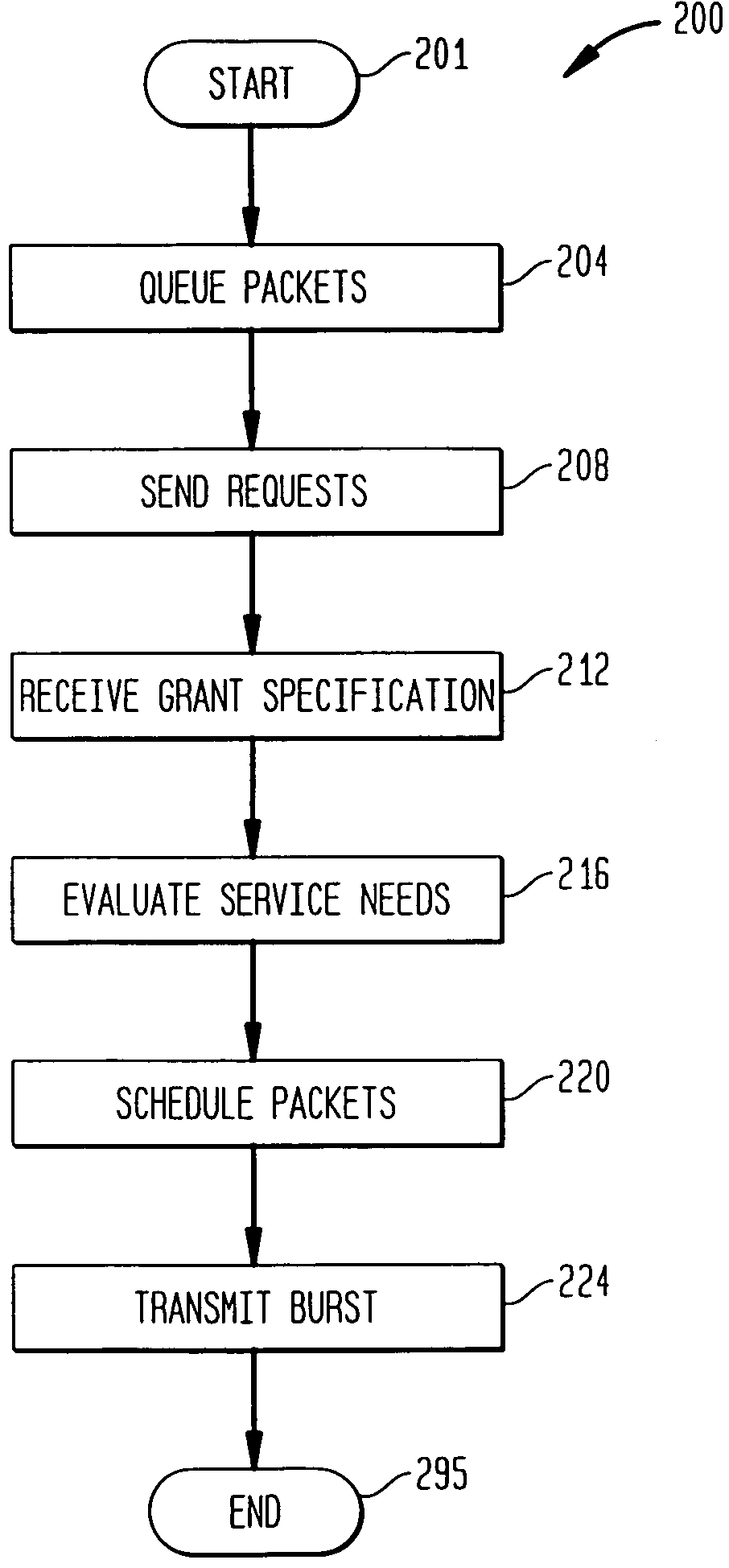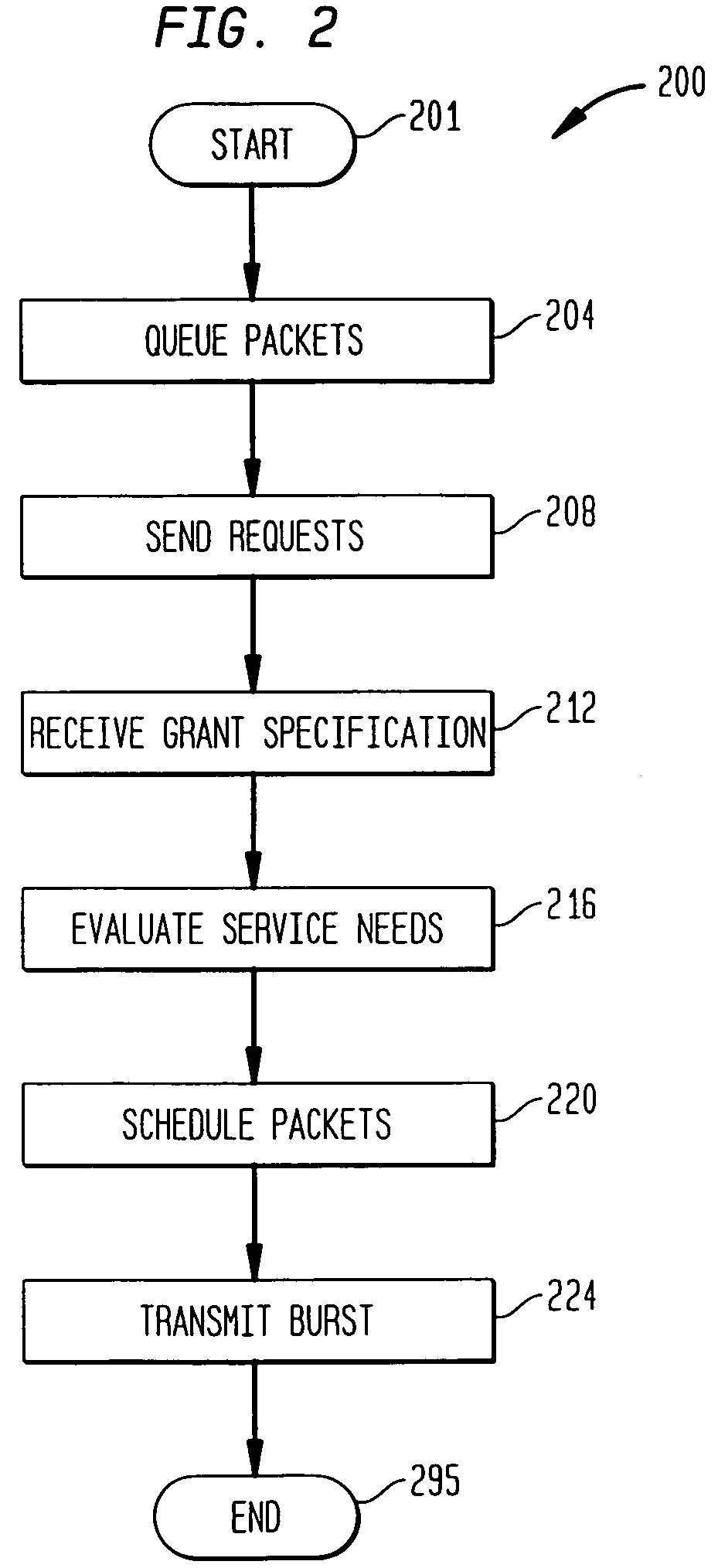Method for scheduling upstream communications
a technology for upstream communication and transmission, applied in the field of controlling network transmission, can solve the problems of packet latency, packet loss or corruption, and the inability of cable modems to use the bandwidth granted, and achieve the effect of higher priority
- Summary
- Abstract
- Description
- Claims
- Application Information
AI Technical Summary
Benefits of technology
Problems solved by technology
Method used
Image
Examples
Embodiment Construction
Table of Contents
[0030]I. Data Traffic Management System Overview[0031]II. Cable Modem Scheduling[0032]III. Piggybacking Bandwidth Requests[0033]IV. Conclusion
I. Data Traffic Management System Overview
[0034]FIG. 1 illustrates data traffic management system 100 according to an embodiment of the present invention. System 100 is preferably, but not necessarily, of the type described in U.S. Patent Ser. No. 60,247,188, entitled “A Local Scheduling Mechanism for Cable Modems,” filed Nov. 9, 2000, by Sala et al., (still pending), which is incorporated by reference herein in its entirety.
[0035]System 100 includes a headend or cable modem termination system (CMTS) 102 that exchanges data with one or more cable modems 104 over a communications interface 110, which includes wired or wireless local area networks (LAN) or wide area networks (WAN), such as an organization's intranet, local internets, the global-based Internet (including the World Wide Web (WWW), private enterprise networks, or t...
PUM
 Login to View More
Login to View More Abstract
Description
Claims
Application Information
 Login to View More
Login to View More - R&D
- Intellectual Property
- Life Sciences
- Materials
- Tech Scout
- Unparalleled Data Quality
- Higher Quality Content
- 60% Fewer Hallucinations
Browse by: Latest US Patents, China's latest patents, Technical Efficacy Thesaurus, Application Domain, Technology Topic, Popular Technical Reports.
© 2025 PatSnap. All rights reserved.Legal|Privacy policy|Modern Slavery Act Transparency Statement|Sitemap|About US| Contact US: help@patsnap.com



